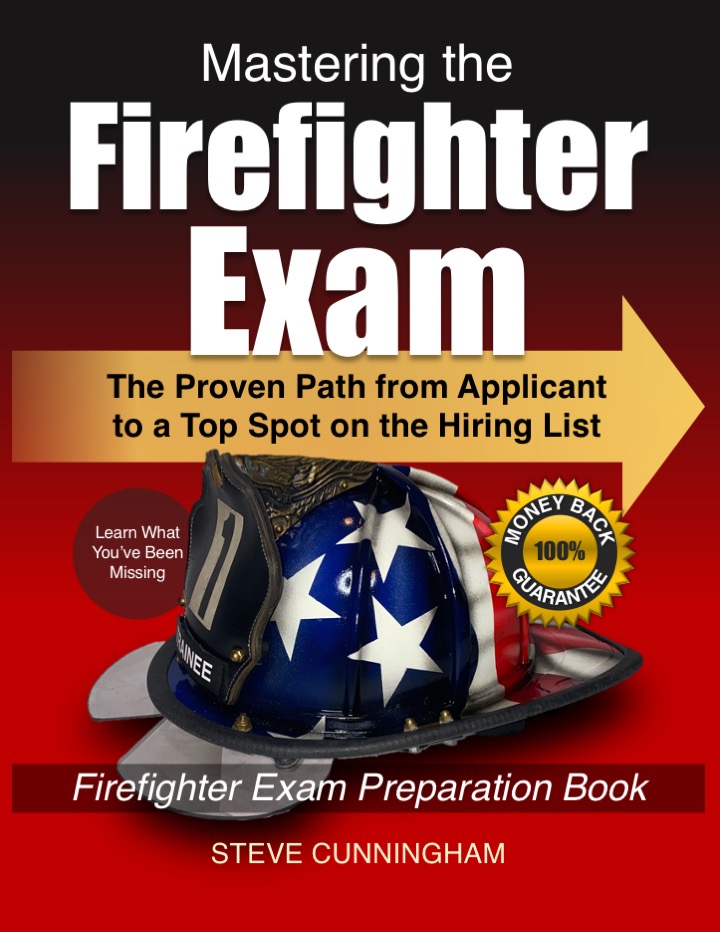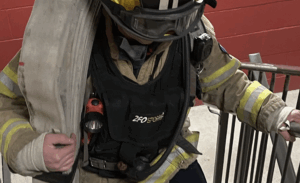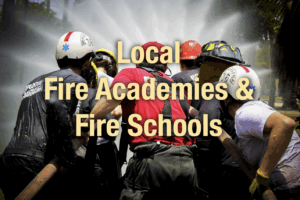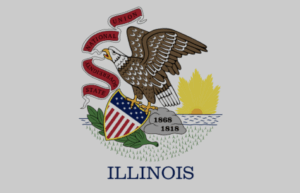A firefighter resume is not just a piece of paper; it is your first opportunity to make a lasting impression on prospective employers in the highly competitive field of firefighting. Here’s why it matters:
- First Impressions Count: Your resume is often the initial contact you have with a fire department. It serves as your introduction, and as the saying goes, “You never get a second chance to make a first impression.” A well-crafted resume sets a positive tone from the start.
- Showcasing Your Qualifications: In a profession where lives and property are at stake, recruiters want to ensure they select the best candidates. Your resume is the tool you use to communicate your qualifications, skills, and experiences that make you a fit for the job.
- Highlighting Relevant Experience: Firefighting is a specialized field, and not all work experiences are equal. A tailored resume lets you emphasize your relevant firefighting experience, certifications, and training, demonstrating your preparedness for the role.
- Competitive Edge: As mentioned earlier, firefighter hiring is highly competitive. A standout resume can give you an edge over applicants with similar qualifications. It’s your opportunity to shine and show why you’re the right choice.
In this article, we will provide you with a comprehensive guide on building a firefighter resume that meets and exceeds the expectations of fire department recruiters.
We will cover everything from resume format and structure to crafting a compelling professional cover letter, highlighting your skills and qualifications, showcasing your experience, and tailoring your resume to specific job postings. By the end of this blog, you will have the knowledge and tools to create a resume that sets you apart in the competitive field of firefighting.
Table of Contents
Learn How You Can Become A Firefighter

Mastering the Firefighter Exam is a complete guide on how to pass the firefighter exam with a top score. It simplifies the complicated hiring practices of big city fire departments and reveals insider information most candidates don’t know about.
If You Would Like To Know How To Get A Head Of Your Competition, This Book Is For You.
Understanding the Firefighter Resume
A firefighter resume is your professional calling card. Its primary purpose is to showcase your qualifications, experiences, and skills relevant to the firefighting profession. Here’s why it’s essential:
- Qualification Display: It highlights your firefighting qualifications, certifications, and training, demonstrating that you meet or exceed the requirements for the position.
- Experience Emphasis: Your resume provides a platform to detail your firefighting experience, whether it’s through prior roles, volunteer work, or internships. This allows recruiters to assess your practical knowledge.
- Skill Demonstration: It allows you to present your firefighting skills effectively, emphasizing your ability to handle the physical and mental demands of the job.
How Firefighter Resumes Differ from Other Resumes
A firefighter resume differs significantly from other types of resumes due to the unique demands of the profession:
- Emphasis on Skills: Firefighting demands a distinct set of skills, such as fire suppression, emergency medical response, and equipment operation. A firefighter resume prioritizes these skills over other qualifications.
- Physical Fitness: Unlike many other professions, physical fitness is critical to firefighting. Your resume should reflect your physical readiness, including strength, endurance, and agility.
- Certifications and Training: Firefighters require specific certifications and extensive training. Your resume should highlight these qualifications prominently.
- Emergency Response Experience: Firefighters are first responders to various emergencies. Your resume should detail your experience in handling various emergencies, demonstrating your readiness for the role.
A firefighter resume is your introduction to potential employers, a unique document tailored to a demanding profession. It showcases your qualifications, skills, and experiences, setting the stage for further evaluation in the competitive firefighter hiring process.
Incorporate KSA's into Your Resume
Fire departments commonly use the acronym KSA (knowledge, skills, and abilities) when discussing what they’re looking for in recruits. It’s part of their terminology and is readily understood by those on the interview panel. You’ll want to ensure you incorporate your KSAs into your resume and oral interview responses.
Incorporating KSAs (Knowledge, Skills, and Abilities) into your firefighter resume can be a significant advantage. Here’s how it can benefit you.
- Alignment with Job Requirements: KSAs are directly tied to the specific demands of the firefighting profession. By identifying and including relevant KSAs in your resume, you demonstrate that you understand the job requirements and are well-prepared to meet them.
Many candidates will have similar basic qualifications. Including KSAs on your resume can give you an edge by highlighting your unique abilities and expertise directly related to the job.
- Demonstrating Preparedness: KSAs emphasize that you are seeking a job and a career in firefighting. It shows that you’ve done your homework and are committed to being a highly skilled and effective firefighter.
Fire departments are looking for candidates who can contribute immediately. When you incorporate KSAs into your resume, you say, “I have the knowledge, skills, and abilities needed to make a positive impact from day one.”
- Clarity for Recruiters: Fire department recruiters often review numerous resumes. Listing KSAs helps them quickly identify your key qualifications, making it easier for them to understand your suitability for the role.
Many interview questions in the firefighting selection process are designed to assess KSAs. Having these prominently displayed on your resume provides a natural segue into discussing them during interviews, allowing you to showcase your strengths confidently.
Examples of KSAs that can be advantageous on a firefighter resume include:
- Fire suppression techniques and equipment operation.
- Emergency medical response and first aid.
- Hazardous materials handling and awareness.
- Incident command and teamwork.
- Physical fitness and agility.
- Crisis management and decision-making.
- Communication and leadership in high-pressure situations.
Finding Firefighter KSA's
One of the best ways to determine which KSAs to talk about is to study the firefighter job description, which can be found on most city Fire Department Websites or is available from the city Department of Human Resources. You can find your target fire department and go to their website. What are they looking for in candidates? Identify and strategically incorporate those things into your resume and oral interview responses. Discuss how the KSAs are associated with your personal life experiences.
Example Job Description and Firefighter Resume

Incorporating KSAs into your firefighter resume isn’t just about listing them; it’s about demonstrating how you’ve acquired and applied these skills and abilities.
Use concise, specific examples and quantifiable achievements to paint a vivid picture of your readiness for the firefighting profession. Ultimately, this can significantly enhance your chances of standing out to recruiters and landing your dream firefighter job.
Preferred Resume Format for a Firefighters Resume
The preferred resume format for firefighters is the “reverse-chronological format.” This format emphasizes your most recent experiences and achievements, making it easier for recruiters to assess your current qualifications. Here’s why it’s favored:
- Clear Chronology: The reverse-chronological format presents your work history in reverse order, starting with your most recent position and working backward. This provides a clear and logical progression of your career.
- Relevance: For firefighters, recent experiences, certifications, and training are often more relevant. This format ensures that these key qualifications are immediately visible to recruiters.
The Most Suitable Structure
When structuring your firefighter resume, consider the following elements:
- Contact Information: Begin your resume with your name, phone number, email address, and location (typically city and state). Ensure this information is accurate and professional.
- Objective Statement (Optional): An optional objective statement briefly summarizes your career goals and what you bring to the firefighting role. Keep it concise and tailored to the specific position.
- Professional Summary: This section is highly recommended for firefighters. Use it to briefly overview your qualifications, including key skills and certifications. This helps grab the recruiter’s attention.
- Skills and Qualifications: Highlight your firefighting-related skills, certifications, and qualifications. Organize this section with bullet points for clarity. Include fire suppression techniques, emergency medical response, and incident command skills.
- Professional Experience: Detail your work history in reverse chronological order. For each position, include the job title, the name of the department or organization, the location, and the dates of employment. Use bullet points to describe your responsibilities and achievements, emphasizing relevant firefighting duties.
- Education: Provide information about your educational background, including the degrees earned, the institution’s name, graduation dates, and any relevant coursework or honors.
- Certifications: List your firefighting certifications, such as Firefighter I and II, Emergency Medical Technician (EMT), Hazardous Materials (HazMat), and other relevant qualifications.
- Awards and Honors (Optional): If you’ve received any awards or honors related to firefighting or public service, include them in this section.
- Professional Affiliations (Optional): Mention any memberships in firefighting associations or organizations, such as the International Association of Fire Chiefs (IAFC) or the National Fire Protection Association (NFPA).
Tips for Organizing Sections Effectively
- Prioritize Relevance: Place the most relevant sections (Skills and Qualifications, Professional Experience) near the top of your resume to grab the recruiter’s attention.
- Be Consistent: Maintain a consistent format throughout your resume, including fonts, bullet points, and headings.
- Use Action Verbs: Start bullet points with strong action verbs (e.g., “Implemented fire suppression techniques,” “Led emergency response teams”).
- Quantify Achievements: Whenever possible, use quantifiable achievements (e.g., “Managed a team of 10 firefighters,” “Responded to over 200 emergency calls annually”) to showcase your contributions.
- Tailor Your Resume: Customize your resume for each job application by highlighting the most relevant qualifications and experiences that match the job posting.
By following these guidelines and selecting the preferred reverse-chronological format, you can create a firefighter resume that effectively showcases your qualifications and increases your chances of success in the competitive hiring process.
Sample Firefighter Resume
[Your Name]
[Your Address]
[City, State, ZIP Code]
[Your Email Address]
[Your Phone Number]
Objective (Optional):
Motivated and dedicated entry-level firefighter candidate with a strong commitment to public safety and a passion for serving the community. Seeking to join [Department Name] as a firefighter to contribute to the team’s mission of protecting lives and property.
Professional Summary:
Eager and physically fit candidate with comprehensive training in fire suppression techniques, emergency medical response, and incident command. Proficient in handling firefighting equipment and executing life-saving procedures under pressure. Adept at teamwork and communication in high-stress situations.
Skills and Qualifications:
- Firefighter I and II Certifications
- Emergency Medical Technician (EMT) Certification
- Hazardous Materials (HazMat) Awareness
- CPR and AED Training
- Fire hose operation and maintenance
- Fire scene size-up and safety protocols
- Incident command system (ICS)
- Physical fitness and endurance
- Strong problem-solving skills
- Effective communication under pressure
Education:
[Degree Earned, e.g., Associate of Science in Fire Science]
[Institution Name, e.g., XYZ Community College]
[City, State]
[Graduation Date, e.g., May 20XX]
Professional Experience:
Firefighter Intern
[Department Name], [City, State], [Month Year – Month Year]
- Assisted in responding to emergency calls, performing firefighting and rescue operations, and providing basic life support to victims.
- Conducted routine equipment inspections and maintained firefighting tools and apparatus.
- Participated in departmental training exercises, including live fire drills and simulated emergency scenarios.
- Worked collaboratively with senior firefighters and commanders to ensure effective incident management.
Volunteer Firefighter
[Volunteer Fire Department Name], [City, State], [Month Year – Month Year]
- Responded to fire alarms and emergency calls, assisting with fire suppression, search and rescue, and first aid as needed.
- Conducted fire prevention and safety education programs in the community.
- Assisted in organizing and participating in departmental fundraising events and community outreach efforts.
- Attended regular training sessions to improve firefighting skills and stay up-to-date with safety protocols.
Certifications:
- Firefighter I and II Certification, [Certifying Agency]
- Emergency Medical Technician (EMT) Certification, [Certifying Agency]
- CPR and AED Certification, [Certifying Agency]
- Hazardous Materials (HazMat) Awareness, [Certifying Agency]
Sample Firefighter Cover Letter
Completing Your Firefighter Resume
When it comes to securing a firefighting position, your resume is crucial, but it’s the cover letter that can truly set you apart. This section explores the significance of including a cover letter with your firefighter resume and provides a sample cover letter that can ignite your career journey. Discover why this often-overlooked document can be your secret weapon in the competitive world of firefighting.
[Your Name]
[Your Address]
[City, State, ZIP Code]
[Today’s Date]
[Department Name]
[Department Address]
[City, State, ZIP Code]
Dear Hiring Committee,
I am writing to express my strong interest in the entry-level firefighter position at [Department Name], as advertised on [Job Posting Source]. As a dedicated and physically fit candidate passionate about public safety, I am excited to contribute to your department’s mission of protecting lives and property within the community.
My comprehensive training in fire suppression techniques, emergency medical response, and incident command, and my commitment to teamwork and effective communication make me a well-prepared candidate for the role. I have completed my Firefighter I and II Certifications, obtained my Emergency Medical Technician (EMT) Certification, and received Hazardous Materials (HazMat) Awareness training. I am also certified in CPR and AED.
During my internship with [Department Name], I gained hands-on experience in responding to emergency calls, maintaining firefighting equipment, and participating in departmental training exercises. My volunteer work with [Volunteer Fire Department Name] allowed me to develop my firefighting skills further and engage in community outreach efforts.
I am confident that my dedication, training, and enthusiasm for the firefighting profession align with the values and goals of [Department Name]. I am eager to contribute my skills and passion to your team.
Enclosed is my resume, which provides a detailed overview of my qualifications and experiences. I look forward to discussing how my background and abilities can benefit [Department Name] in more detail.
Thank you for considering my application. I am excited about the prospect of joining your department and contributing to the safety and well-being of our community.
Sincerely,
[Your Name]
[Enclosure: Resume]
Summary
In the world of firefighting, a strong resume isn’t just a piece of paper; it’s your launchpad into a rewarding and heroic career. Our guide has walked you through the essential steps to create a standout firefighter resume, equipping you with the knowledge and tools to set your aspirations ablaze.
By understanding the unique nature of firefighter resumes, incorporating crucial Knowledge, Skills, and Abilities (KSAs), and following a suitable structure, you’re now prepared to make a lasting impression on prospective employers. Remember, the competitive field of firefighting demands dedication and a well-crafted resume that highlights your qualifications and commitment to public safety.
Remember, the journey of a thousand miles begins with a single step, and your journey to a rewarding firefighter career begins with a well-crafted resume. Start crafting your future today.







